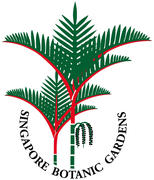Wilsonia
Accepted name/Authority/Place of publication:
WILSONIA R. Br., Prodr. 490 (1810).
Tribe:
Cresseae
Type Species:
Wilsonia humilis R. Br.
Habit:
Perennial subshrubs with prostrate or weakly ascending branches, glabrous or with bifid hairs.
Leaves:
Leaves sessile or shortly petiolate, small, simple, entire, fleshy.
Inflorescences:
Flowers axillary, solitary, ± sessile, ebracteate.
Flowers:
Sepals 5 (rarely 6), connate, herbaceous, tubular-campanulate; lobes shorter than the tube, bearded inside. Corolla white, salver-shaped; limb deeply 5(rarely 6)-lobed; lobes hooded and recurved, imbricate in the bud and with induplicate margins glabrous. Stamens 5, exserted, inserted near the top of the corolla tube; filaments terete, glabrous; anthers twisting after anthesis;. Disk annular or cupular. Ovary glabrous, partly or completely 2-locular with 2 ovules per locule; styles 2, fused proximally, free distally; stigmas capitate or ovoid.
Pollen:
pollen 3-colpate, smooth.
Fruits:
Capsule obovoid, shorter than the calyx, indehiscent.
Seeds:
Seeds 1 or 2, smooth, glabrous.
Distribution:
Australian endemic genus of 3 species growing in temperate Australia. map
Countries:
Australia
Ecology:
Grows in coastal salt marshes, brackish swamps and on edges of inland salt lakes.
Common names and uses:
Wilsonia
Number of Species:
3
References:
Johnson, R.W. 1986. Convolvulaceae. Flora of South Australia (ed 4) 3: 1133-1145.
Contributors:


